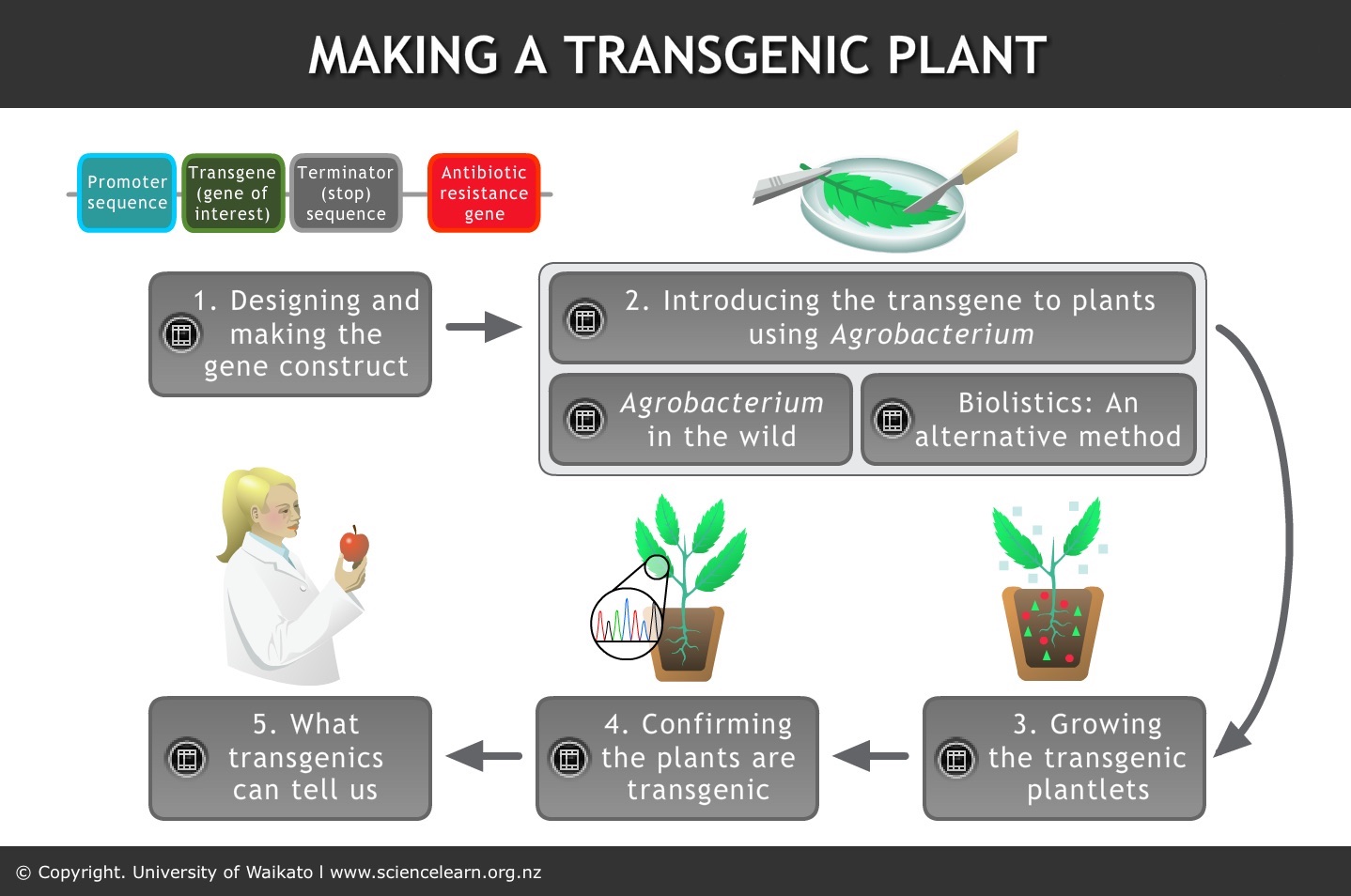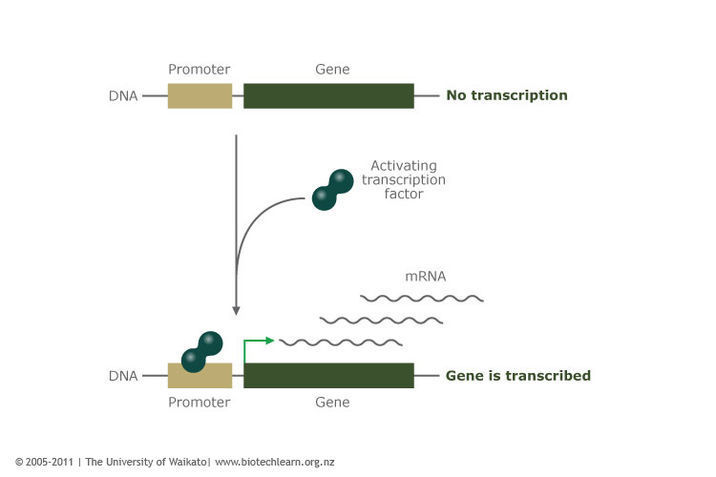What determines whether an apple has red flesh? Find out how researchers at Plant & Food Research discovered the genetic basis of red flesh colour.
Red-fleshed apples contain much more red pigment – anthocyanin – than white-fleshed apples. Plant & Food Research (PFR) scientists Richard Espley and Andy Allan and their colleagues recently discovered why so much anthocyanin is made in red-fleshed apples.
Transcription factors are likely suspects
Transcription factors are proteins that control gene expression. They bind to short DNA sequences close to a gene and switch the gene’s expression on or off. Richard and Andy suspected that a transcription factor controlled apple flesh colour, because all the genes involved in producing anthocyanins were more highly expressed in red apple flesh than in white flesh. They predicted that the same transcription factor was turning all the genes on at the same time.
However, there are thousands of transcription factors in the apple genome, so the team needed to use clues from other plants to work out which one makes apple flesh red.
Explore gene expression and learn more about how genes are made into proteins in this article that looks at the role of proteins in the body.
Finding the right transcription factor
The researchers focused on the model flowering plant called Arabidopsis thaliana. Scientists had already discovered that, in Arabidopsis, a transcription factor controls all the genes involved in making anthocyanin.
Richard and Andy went looking for a DNA sequence in apple similar to the one that encodes the Arabidopsis transcription factor. They isolated an apple gene whose sequence closely matched the sequence of the Arabidopsis gene. This was a strong hint that the protein expressed from the gene (called MYB10) controlled anthocyanin production, and therefore colour, in apple flesh.
Testing, testing: red plants spell success
The next step was to work out whether the MYB10 protein from apple could control anthocyanin production. The team did several tests to confirm this:
- First, they introduced the gene encoding MYB10 into a tobacco leaf and showed that the patch on the leaf where the gene was introduced went red. This meant the MYB10 protein could force tobacco plants to make a lot of anthocyanin. This experiment gave them a quick, clear result, confirming they were on the right track.
- Next, they made a transgenic apple plant that contained an extra copy of the gene encoding MYB10 in every cell. They made sure that every cell produced a lot of MYB10 protein by including a strong promoter in front of the gene. All the tissues of the transgenic plant were red.
- As a final check, they looked at the levels of expression of MYB10 protein in apple flesh. This showed that there was much more MYB10 in red flesh than in white flesh.
Together, these experiments confirmed that MYB10 was responsible for controlling red colouration in apples, including red flesh colour.
How does MYB10 make red apples red?
Richard and Andy also worked out why the MYB10 protein is expressed so strongly in red apple flesh. They knew that MYB10 switches on its own expression by binding to part of the promoter of the gene that encodes it. When they looked at the promoter in red-fleshed apples, they saw that it had a mutation: the short DNA sequence that bound the MYB10 protein was duplicated 5 times.
The effect of the duplication was that much more MYB10 bound to the promoter in red-fleshed apples and so the protein was expressed at a much higher level. This means much more anthocyanin is made – and the apple flesh is red.
Using genetic information may improve breeding
The experiments carried out by Richard, Andy and others give us a detailed understanding of the genetic cause of red flesh in apples. Knowledge like this can help make breeding programmes more efficient – for instance, it can help scientists to design markers for particular traits.
In an update, Richard and the PFR team continue to investigate the genes that control the red colour and whether these effects can be induced in other plants. They are using the MYB10 gene to generate plants with novel pigmentation – an attractive trait in ornamental and horticultural plants.
Even though Richard and Andy’s work involves creating transgenic plants in the laboratory, apple breeding in New Zealand does not use transgenic techniques. Transgenic experiments are used as a tool for discovering more about how individual traits arise.
Related content
Find out more in these articles: Genetic information and apple breeding and Sequencing the apple genome.
Explore gene expression and learn more about how genes are made into proteins in this article.
Useful links
Read the original research papers in which Andy, Richard and colleagues describe the genetic basis of red flesh in apples.
- Red colouration in apple fruit is due to the activity of the MYP transcription factor, MdMYB10
- Multiple Repeats of a Promoter Segment Causes Transcription Factor Autoregulation in Red Apples
Learn more about Arabidopsis thaliana a model plant.




